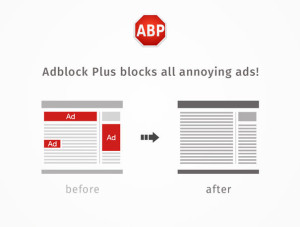
Photo credit: Shawan Zain
The predicted surge in use of online ad blockers challenges publishers and marketers to find alternative methods to reach consumers and generate revenue.
Already popular with millennials, ad blocker applications prevent digital ads from displaying along with the content of a web page. Such ad blocking may become pervasive in coming months now that Apple’s new iOS 9 operating system lets users easily install ad-blocking software. Media experts call that new ability a game changer.
Why Consumers Block Online Ads
Especially on mobile phones, ads cause slow-loading web pages, shortened battery life and higher fees for data usage. Mobile users install free or low-cost ad blockers to prevent those problems. In the process, they deprive web publishers of revenue and greatly reduce the effectiveness and cost advantages of a major advertising channel for brands. Both publishers and online advertisers fear ad blockers put digital advertising and the Internet’s ecosystem at risk.
What Publishers Can Do
Online publishers without sufficient advertising will not continue publishing for long. Clearly, publishers need answers to ad blockers. The Washington Post has experimented with software to deny access to phones with an ad blocker application. In that case, the consumer would probably just migrate to another news source.
One long-term solution is to develop new ad formats that consumers find less irritating and more entertaining. Another is to find publishing platforms where ad blockers don’t work. The Washington Post, The New York Times, and other major publications have entered agreements to publish their news and feature content directly on Facebook – what Facebook calls Instant Articles where the content is immune to ad blockers. Facebook shares ad revenue with the publishers.
The marketplace will eventually sort itself out, predicts Steve Rubel, chief content strategist for Edelman in an article for Advertising Age. When TiVo and DVRs allowed consumers to skip television commercials, new subscription services opened the way for branded entertainment and product placement.
Marketing Alternatives to Online Advertising
What can marketers do now to counter the potentially disastrous decline in viewership of online ads as a result of ad blockers? Earned media – good old-fashioned PR — is one solution along with content marketing and social media marketing. Earned media is impervious to ad blocking and has greater credibility than advertising. With creative development of earned media placements, both traditional and social media can be very effective in communicating brand messages normally delivered through advertising.
The move to earned media may become a long-term play for both B2C and B2B marketers. “We may look back on this time as the beginning of the great era of earned media,” Rubel says.
Focus on Brand Journalism
The spread of ad blockers will prompt more companies to turn to brand journalism or content marketing.
Brands will focus more on marketing useful content to highly targeted audiences, predicts Mark Pinsent, managing director of digital marketing agency Metia. People say that they don’t like advertising. In reality, they don’t like bad marketing, namely irrelevant, low-quality, poorly targeted, overly interruptive marketing, he writes in his blog post, Ad blocking and the Drive to Content.
Companies will combine brand journalism with social media marketing, Pinsent says. They are already learning to use social media in a more engaging way and create content that is more entertaining and shareable.
For instance, Jaguar recently produced a video of its new F-Pace four-wheel drive car performing the world’s biggest ever loop-the-loop. The feat gained extensive media attention.
“They then used targeted paid-for social media to get that video in front of people who would find it interesting,” Pinsent told the BBC. “They did that without going through any traditional publisher.
Bottom Line: The growing use of online ad blockers is predicted to greatly reduce viewership of digital advertising, especially on mobile devices. As one counter-offensive, publishers and marketers must create new digital advertising formats that consumers will find less objectionable and more entertaining. Until then, companies and brands may rediscover the benefits of public relations and content marketing to reach consumers with their marketing messages. A greater investment in creative PR activities to promote products in both traditional and social media may well turn out to be just as effective and less costly than online advertising.
What’s your opinion of ad blocking’s impact on earned media and brand journalism? Please comment below.
This post was originally published on the CyberAlert blog.
This article was syndicated from Business 2 Community: Ad Blockers Unlock Opportunities for PR & Content Marketing
More Sales & Marketing articles from Business 2 Community:




